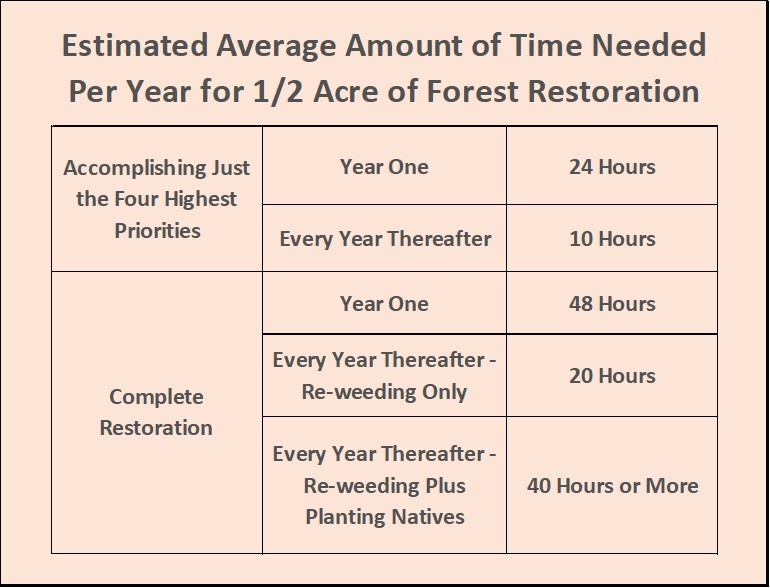How Much Time Will it Take to Restore Your Backyard Forest?
Like many residents in the Puget lowland, you may have infestations of invasive plants in your backyard forest that you want to tackle – more than you can remove in an afternoon, and perhaps more than you can remove in a dozen afternoons. You could just dive in and start pulling weeds, but you may want to pause for a moment and prioritize. Different forest situations will obviously vary, but hopefully the information below can give you some idea of what to expect before starting to restore your backyard forest.
Here are my top priorities:
- Control any Noxious Weeds as mandated by the State or your County.
- Control the Ivy growing up trees.
- Remove (or at least cut down) any Holly, Laurel, or Non-Native Blackberry.
- Establish weed breaks around patches of Hedge Bindweed, Herb Robert, Creeping Buttercup, Vinca, and Himalayan Blackberry.
The table below shows estimates of the number of hours per year required to restore an average backyard forest that is ½ acre in size. It assumes that the first year of effort is devoted solely to removing invasive plants, either some of them (the four priorities) or all of them (complete restoration). Re-weeding will be required every year thereafter for maintenance. The hours can be spread out over an entire year and divided up however you want. Complete restoration also includes planting natives to replace the invasives.

Going beyond the four highest priorities is essentially just gardening with native plants, and that can take up as much time as you care to let it. For many of us, there are few ways we’d rather spend our time than outside in the forest, nurturing plants and watching them grow.